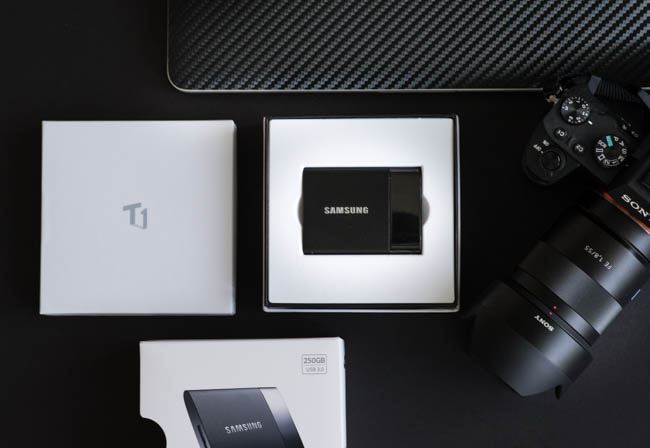In some ways photography as a hobby, and even more so as a profession, is a minefield of potential mishaps and disasters. Our gear is expensive and everyone knows it, making us a target for thieves, and for the same reason,we stand to lose more in a disaster like a fire or a flood that damages property left in a home than those without an expensive pastime. Then there are the images we create – potentially very valuable monetarily in their own right for pros, or sentimentally valuable for any of us. These files are your blood sweat and tears, your memories, your pride and joy, an intangible record of all your work. So many digital files can fit on a hard drive that a single failure can erase years worth of photographs, and even if you manage to keep all your files physically, there are people who want to take them from you via rights grabs. Thankfully, there are ways to protect ourselves.
Insurance
The bare minimum you should have as a hobbyist with more than about $500 in gear is equipment insurance. This can be renters or homeowners insurance, or a separate policy just for your equipment. If you’re a professional, you also need liability insurance. If anything major should go awry on a shoot, say your client slips on a banana peel and cracks their tailbone, your liability insurance will cover this. Some venues will require you to be insured to even step foot inside with your camera as a professional. Even if you’re only working as an assistant, you need liability insurance. You don’t want to be held personally liable if you accidentally break something expensive on set.
Some of the major insurers will have professional photography insurance packages and worth inquiring about. A real life example: a Traveler’s commercial photography insurance package through a local broker costs around $50 per month and covers $2 million in liability and $40,000 in personal equipment. Other popular options include Hiscox small business insurance, Package Choice, which is specifically for media professionals, and policies offered to members of photographer’s associations like ASMP and PPA. PPA’s highest tier of membership actually includes $15,000 of equipment insurance.
Backups
The old standby that you’re likely to hear from a multitude of sources is the 3-2-1 system. This means that you should have three copies of every file you care about on two devices on site and one off site. So for example, copy number one could be stored on your computer’s internal hard drive, copy two could be an external hard drive backed up with Time Machine or another backup app, and copy three could be stored in the cloud or on another external drive that you keep somewhere else.
Take it from someone who has dropped a portable hard drive that hadn’t been backed up in a few weeks – you want to stay on top of your backups. If you ever have a drive failure, it’s usually much, much less expensive to buy a new hard drive and copy everything over to it than to have to pay for data recovery, and it’s not always even possible to recover all your data. If you’re using automated backup software, it’s worthwhile to double check that it’s actually working. I’ve seen Time Machine get stuck at “preparing backup” and the person using it didn’t notice for weeks.
Contracts
If you’re taking photos for anyone but yourself you should be using contracts. Contracts provide a way to break down expectations for both the client and the photographer as well as outline what will happen if those expectations are not met. They can include timelines, late fees and payment terms, copyright and licensing information, and when and where photos must be credited to name a few clauses.
[REWIND:] AGREE | REMOVING THE HEADACHE OF CONTRACTS & PAYMENTS FOR PHOTOGRAPHERS
Contracts aim to predict what could possibly go wrong in a business agreement and address it before it happens and can protect both parties. If you’re shooting for someone else, it’s a good idea to have some sort of a contract with your employer if there is likely to be any question as to who owns the copyrights of photos taken on the job. If it’s not a “work for hire” situation, you own them as the photographer, but I have seen disputes arise when photos were used by the employer without credit or permission, likely out of simple misunderstanding.
Model and property releases are also important contracts for photographers to use. Failure to get a signed release can spell trouble for you (just ask Chipotle) if you use images containing recognizable people or things, sometimes including landmarks. You can’t include the Space Needle in a commercial photograph without express permission for instance. Even photographs of pets require a property release for commercial use.
We’ve reviewed the Portrait Contract Bundle from The LawTog some time ago, and it remains just as relevant if not more than ever, and our staff found it effective and simple. The ‘LawTog’ herself is Rachel Brenke, who is a photographer and lawyer, and her ability to understand all sides is evident and helpful. She has many resources for all types of photographers, including contracts, business planning tools, tax advice, forms of all kinds – everything you need to get your legal paperwork in order for your new photography business. Check her site out here.
Around the web you can find photographer’s contracts both for sale and for free, including right here on SLR Lounge. Just make sure everything is applicable where you’re doing business.
With these three things in your back pocket, you can save yourself a world of heartache and hassle as you navigate the world as a photographer.
















